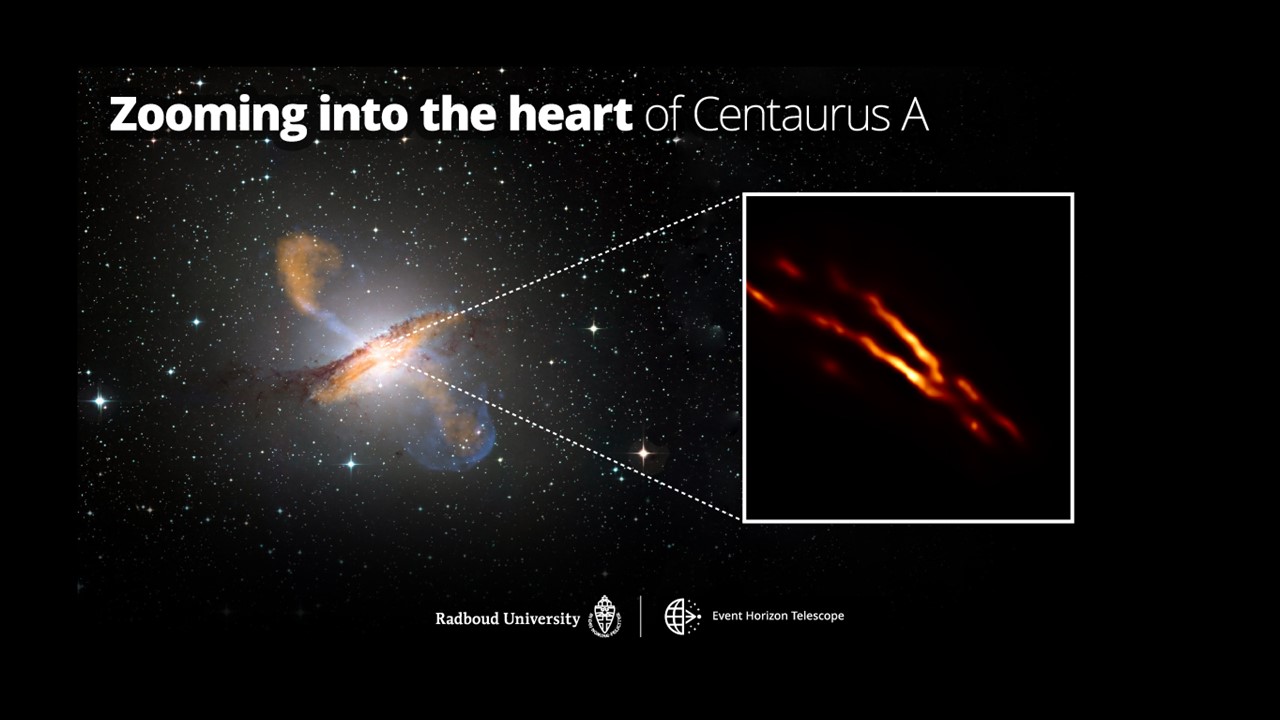
The Event Horizon Telescope has released new super-high-resolution images, this time of the inner details of the galaxy Centaurus A’s jets. The Event Horizon Telescope is a collaboration of radio telescopes all across the globe that work together to observe targets of interest. This collaboration has previously shown us the twisted light that is warped around M87’s central black hole. Now they look out a bit further from the center of a different system.
Centaurus A is an active galaxy. This means material – dust, gas, stars, planets – have been driven into the galaxy’s center by some sort of a collision or similar, and as they spiral into toward the galaxy’s central black hole, things get denser, heat up, and essentially form an electromagnet that sends jets of particles out the north and the south magnetic poles of the galaxy. We can see these jets extending hundreds of thousands of light-years in radio, and deep images from scopes like Hubble show features down to hundreds of light-years. And now, we can see details smaller than one light-day across.
To put this in perspective, I’m going to quote from the press release: With the resolving power of the EHT, we can now link the vast scales of the source, which are as big as 16 times the angular diameter of the Moon on the sky, to their origin near the black hole in a region of merely the width of an apple on the Moon when projected on the sky. That is a magnification factor of one billion.
What shocked me, and apparently also the research team, is that the jets have this odd illumination of the edges only, and this is consistent with the jets being cones of particles that are easiest to see at the edges. We’ve seen this to a lesser degree in other systems, but as collaborator Sera Markoff states: We found it challenging to explain with the same models we used for M87. Something different must be happening, like helical magnetic fields, which gives us new clues about how they may ‘squeeze’ the jets.
This data intriguingly points to the exact location of Centaurus A’s central black hole, and the research team thinks that future observations will be able to add in this central detail. The only thing slowing them down is the need to extend their network to space. Sometimes, an Earth-sized telescope just isn’t big enough. There are currently numerous plans to seek funding to build both orbiting and lunar telescopes, and I’m hoping we are less than a generation away from mapping the core of this active galaxy.
More Information
NOVA press release
“Event Horizon Telescope observations of the jet launching and collimation in Centaurus A,” Michael Janssen et al., 2021 July 19, Nature Astronomy




 Join the Crew!
Join the Crew!
 Escape Velocity Space News
Escape Velocity Space News
0 Comments